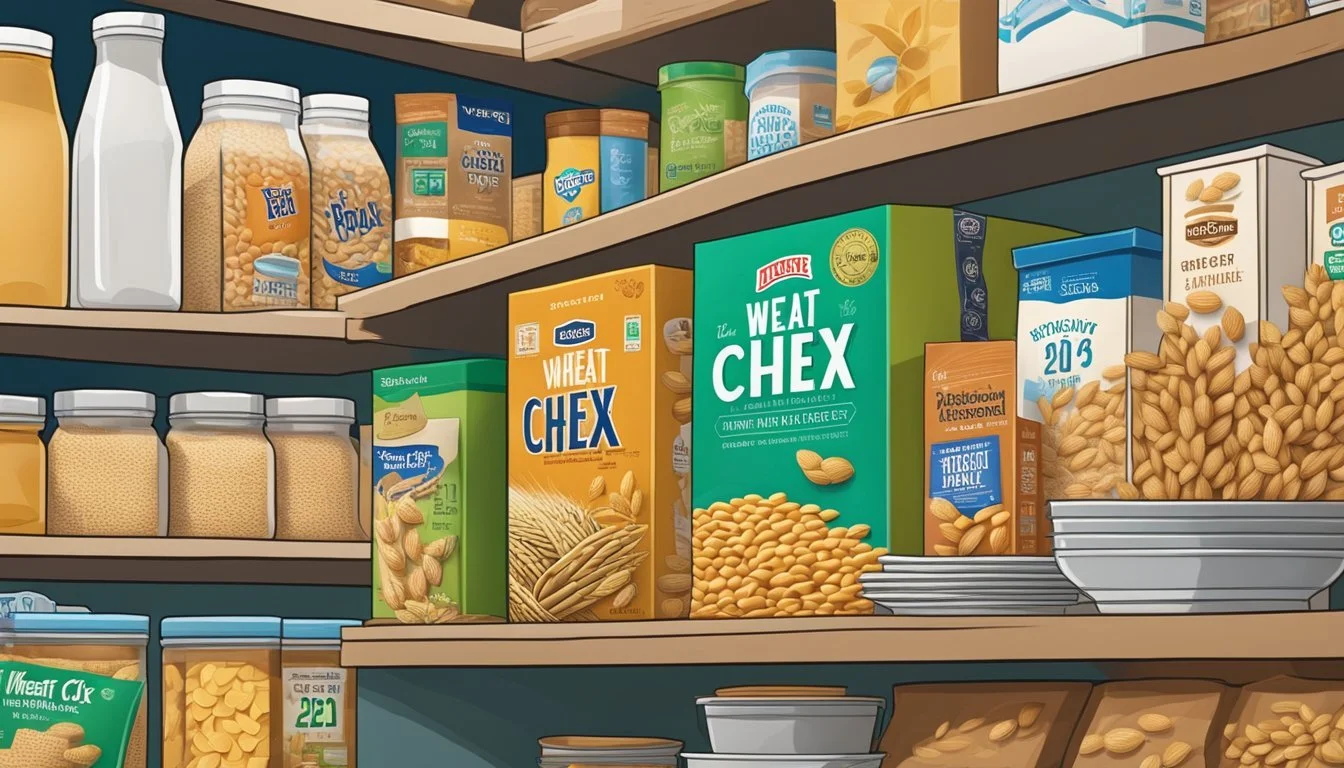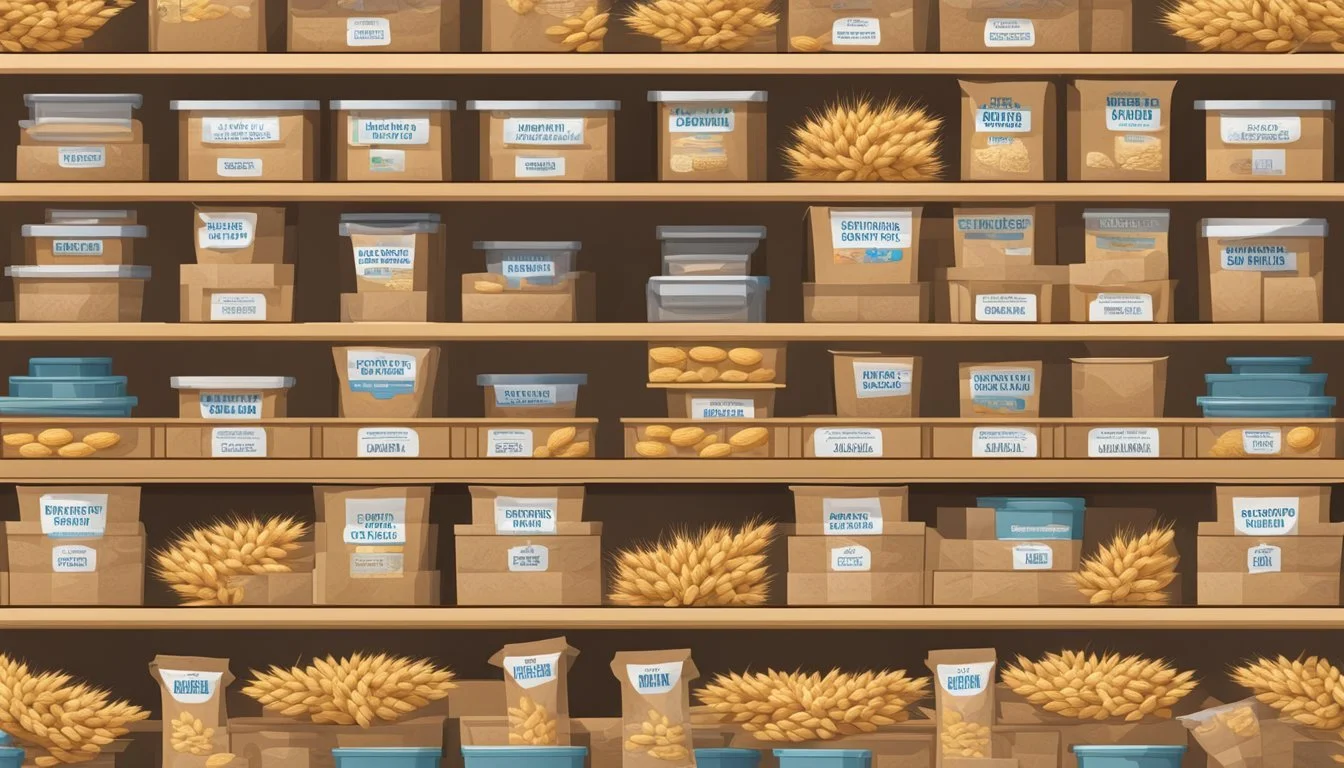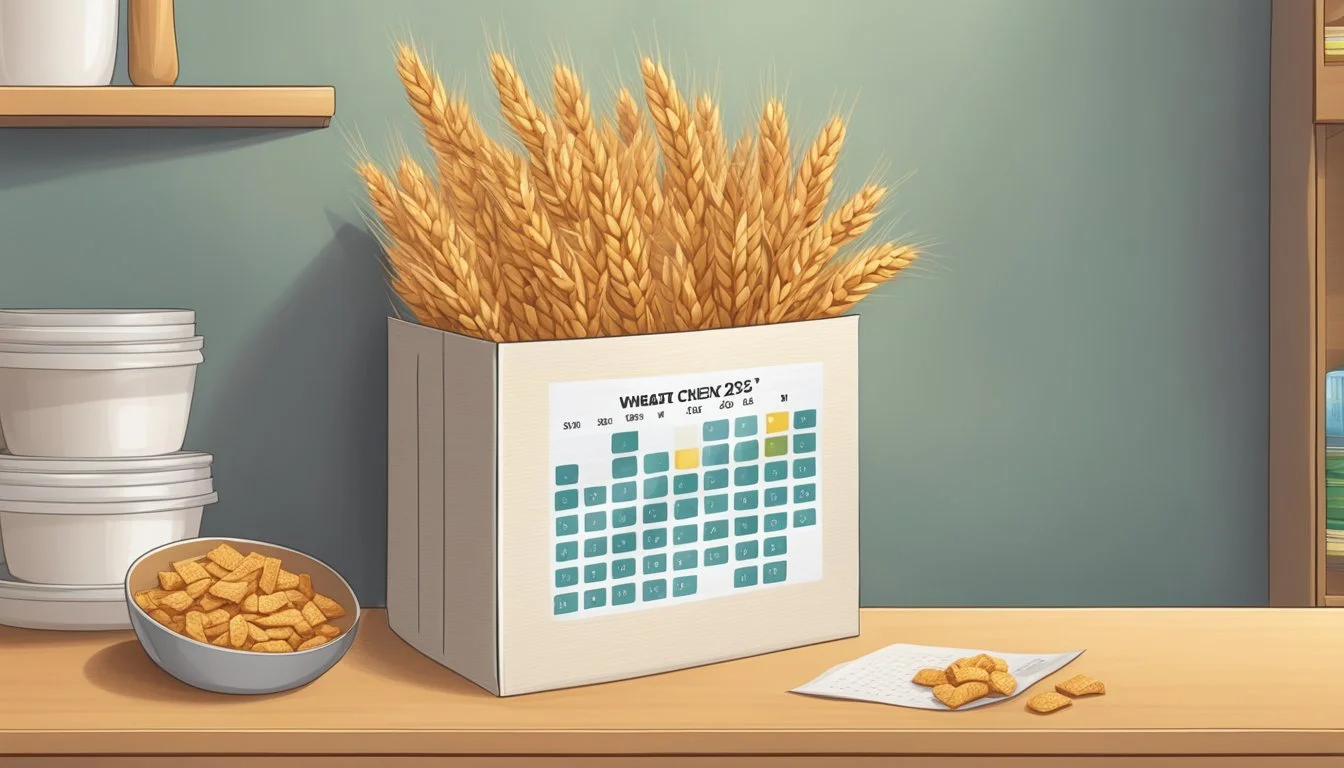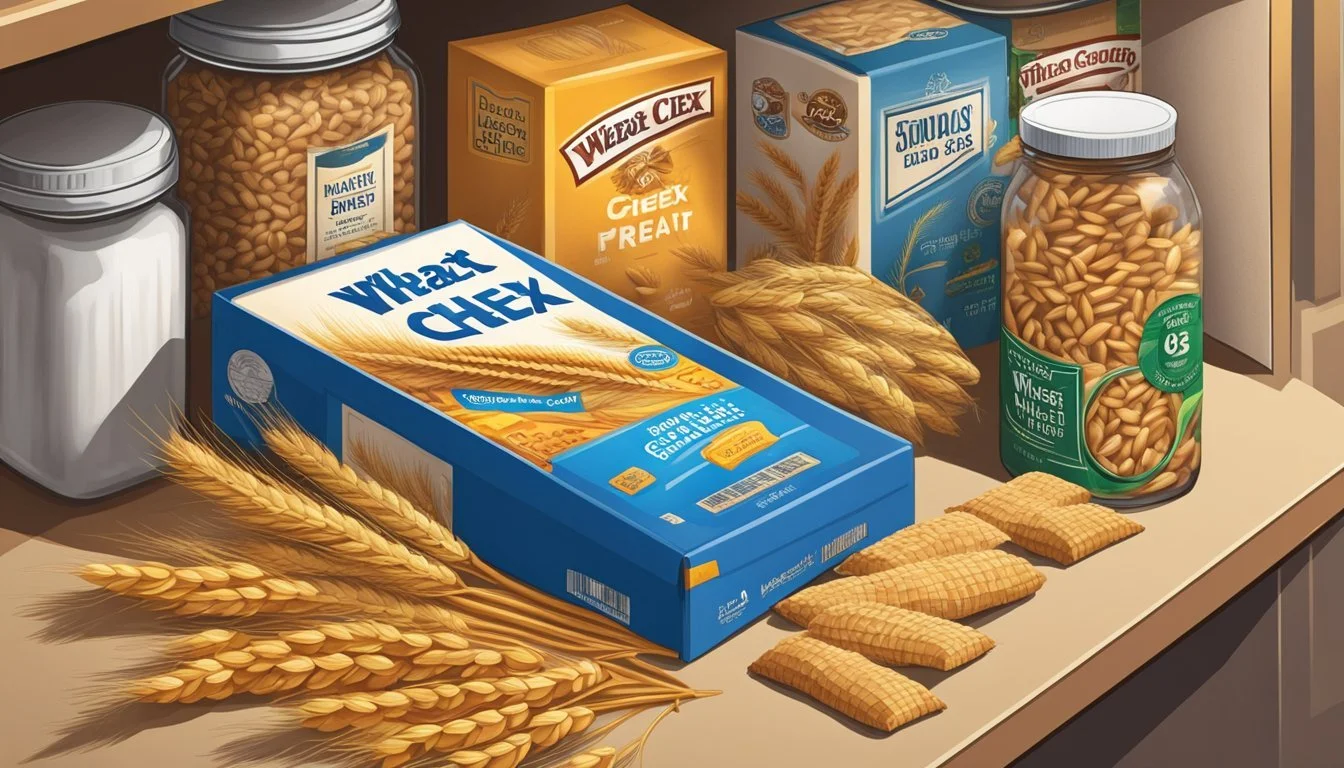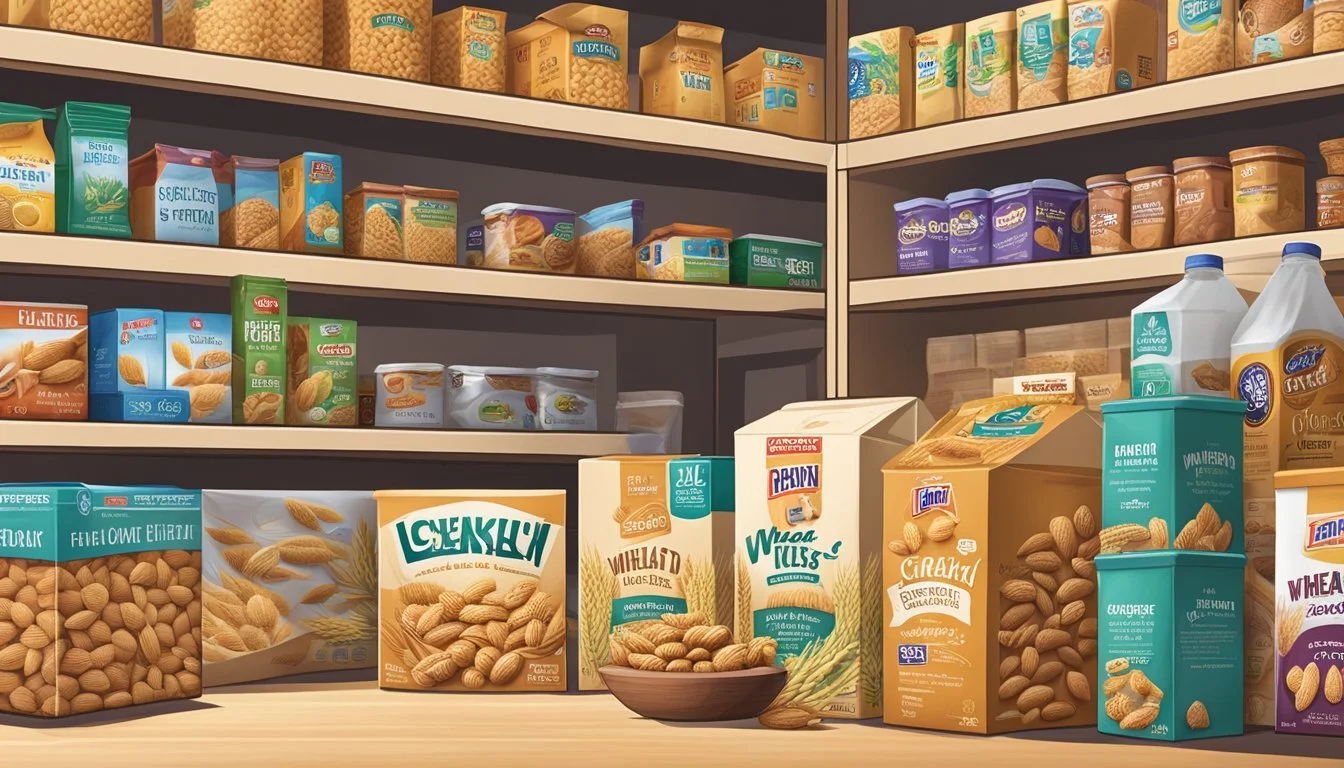How Long Do Wheat Chex Last?
Understanding Cereal Shelf Life
Wheat Chex (how long does wheat chex last?) cereal is a staple in many households, favored for its crunchy texture and nutritional value. Like other cereals, it consists of grains that have been processed, shaped, and then baked, making them a convenient and quick breakfast option or snack. With its high fiber content and low sugar levels, it is often regarded as a healthier choice among the array of breakfast cereals available on the market.
When it comes to the shelf life of Wheat Chex, it is important for consumers to understand what they can expect. The product is typically marked with a 'best by' date, which indicates the timeframe within which the product will maintain its optimal taste and texture. However, this date is not an expiration date—Wheat Chex does not suddenly become unsafe to eat once this date has passed.
The shelf life of unopened Wheat Chex can extend well beyond the 'best by' date, often ranging from 6 to 12 months without compromising quality. Once opened, the cereal remains suitable for consumption for an additional 4 to 6 months, provided it is stored in a dry, cool environment. Storage conditions play a crucial role in maintaining the cereal's freshness and preventing spoilage, thereby extending its edible period.
Understanding Shelf Life
The shelf life of Wheat Chex is influenced by a variety of factors, including storage conditions and the indication of expiration dates. Proper understanding of these elements ensures optimal freshness and safety.
Factors Affecting Shelf Life
When considering the shelf life of Wheat Chex, it is critical to evaluate several key factors:
Storage Environment: Wheat Chex should be kept in a cool, dry place to mitigate the risk of moisture and heat, which can accelerate spoilage.
Packaging: Intact, unopened packaging helps prolong shelf life by protecting against contaminants and preserving freshness. Once opened, transferring the contents to an airtight container is advisable.
Humidity and Temperature: High humidity levels and temperatures can affect Wheat Chex, leading to staleness or spoilage.
Expiration Dates
Understanding expiration dates on Wheat Chex and their implications is vital:
"Best by" Date: Often, Wheat Chex packages will feature a "best by" date, which indicates the time frame within which the product will maintain top quality.
Post-Expiration Freshness: It’s possible for Wheat Chex to remain safe to consume beyond the "best by" date if stored properly, though the quality may decline.
By keeping these considerations in mind, consumers can ensure they enjoy Wheat Chex at its freshest.
Proper Storage Solutions
Ensuring wheat Chex remain fresh and crisp largely depends on the storage approach utilized. Both the storage environment and the container options play pivotal roles in extending the cereal's lifespan.
Storage Environment
The storage environment is critical for maintaining the quality of wheat Chex. It is essential they be stored in a cool, dry place, away from direct light. Ideal storage conditions include maintaining a consistent temperature that is below 21°C (70°F). A pantry or a cabinet away from any heat sources, such as ovens or windows, can provide an optimal environment to protect the cereal from the degrading effects of air, light, and heat.
Container Options
Once the storage environment is established, selecting an appropriate container is the next step. Wheat Chex should be stored in an airtight container to prevent moisture and pests from compromising its freshness. Suitable container options include:
Plastic containers: Ensure they are food-grade and have a tight-sealing lid.
Glass containers: An excellent choice for blocking out light and providing an airtight seal.
Ziploc bags: If the original packaging is still intact and undamaged, pressing out the excess air and placing the bag inside a Ziploc can be effective.
Regardless of the container chosen, it must seal properly to shield the Chex from air and moisture. It is also beneficial to minimize the air volume in the container to reduce the oxidation process that could lead to staleness.
Recognizing Spoilage
When assessing if Wheat Chex have gone bad, it's crucial to look for certain spoilage indicators and understand the food safety concerns associated with consuming spoiled cereal.
Indicators of Spoilage
Wheat Chex, like other cereals, show several tell-tale signs when they start to spoil:
Odor: A rancid smell is a strong sign that the cereal's natural oils have gone bad.
Taste: Spoiled Wheat Chex may taste stale or off. Always trust your taste buds.
Color: Look for any discoloration or mold on the cereal, which can present as green, black, or white spots.
Texture: Fresh Wheat Chex should be crunchy. If they feel soggy or damp, they're likely no longer good to eat.
Food Safety Concerns
Consuming spoiled Wheat Chex can pose several food safety risks:
Mold: Eating moldy cereal can cause allergic reactions or respiratory problems.
Spoiled: Cereal that smells or tastes off should be discarded to avoid ingesting rancid oils, which can negatively affect health.
Salmonella: While less common in dry cereal, it's important to consider potential contamination that can cause foodborne illness.
Consumers must be diligent in checking these aspects of their Wheat Chex to ensure they are consuming a safe and enjoyable product.
Extending Shelf Life
To maintain the quality and longevity of Wheat Chex, one needs to consider effective storage methods that specifically target temperature control and sealing techniques.
Refrigeration and Freezing
Refrigeration can be a useful tool in extending the shelf life of Wheat Chex. Keeping them in a refrigerator limits exposure to extreme temperature fluctuations, which can impact their freshness and taste. However, for even longer preservation, freezing Wheat Chex is an option. When utilizing a freezer, they can remain edible beyond their typical pantry shelf life. To avoid condensation and freezer burn, one must ensure that the Chex are at room temperature before storage.
Recommended steps for freezing Wheat Chex:
Allow Wheat Chex to cool to room temperature if freshly baked.
Place in a freezer-friendly airtight container.
Ensure minimal air space within the container to reduce oxidation.
Proper Sealing Techniques
To maximize the benefits of refrigeration or freezing, the integrity of the airtight seal is paramount. Proper sealing techniques are critical for preventing moisture and air from spoiling the cereal. Containers with tight-fitting lids are a preferred option.
Containers for best results:
Airtight containers: These provide a robust barrier against air and moisture.
Mylar bags: If using a sealer, these can offer an exceptional airtight environment.
By applying these methods, one can confidently store Wheat Chex in a way that preserves their quality, ensuring an enjoyable cereal experience each time they serve it.
Culinary Uses
Wheat Chex have a versatile role in the kitchen, providing a satisfying texture and a neutral flavor, which makes them a suitable ingredient for both sweet and savory dishes. They are often used in homemade Chex mix, enhancing the snack with their crispness.
Serving Suggestions
One can enjoy Wheat Chex as a simple breakfast cereal served with milk or incorporate them into oatmeal to add a crunchy texture. They are also a staple in homemade Chex mix, a favored snack for road trips and parties, where they blend well with a variety of flavors and seasonings.
Breakfast Bowls: Mix with yogurt, fresh fruit, and honey.
Snack Bites: Combine with nuts, pretzels, and dried fruit for a travel-friendly snack.
Creative Recipes
Given their plain taste, Wheat Chex can be the foundation for a range of creative recipes. Their ability to absorb and complement a wide array of flavors makes them an excellent base for custom snack mixes.
Savory Mix: Toss with melted butter, Worcestershire sauce, garlic powder, and onion powder.
Sweet Treats: Drizzle with melted chocolate or caramel and a sprinkle of sea salt.
The creative use of Wheat Chex in various recipes accentuates the diverse flavors and textures that can transform them from a breakfast option into a party essential.
Nutritional Considerations
When considering the shelf life of Wheat Chex, one must not only think about freshness but also how the nutritional value is affected over time. This section explores the health benefits and potential dietary risks associated with consuming Wheat Chex cereal.
Health Benefits
Wheat Chex cereal is a whole grain product, offering a host of benefits for those including it in their diet. It is low in fat and contains a significant amount of fiber, which can aid in digestive health. The cereal is often fortified with essential vitamins and minerals, such as iron and calcium, that contribute to overall health. In terms of protein, it provides a moderate amount that is necessary for muscle repair and growth.
Fiber: Promotes better digestion and can contribute to heart health
Fortified Nutrients: A single serving delivers vital nutrients, supporting various bodily functions
Dietary Risks
While Wheat Chex is a healthier choice compared to many other cereals that are high in sugar and artificial ingredients, consumers should still be aware of potential dietary risks. For those with a gluten intolerance or celiac disease, Wheat Chex is not suitable because it contains wheat grains. Additionally, overconsumption could lead to an imbalance in nutritional intake, especially considering its malt-o-meal composition, which may provide more carbohydrates than needed if not moderated.
Gluten: Wheat-based, and not suitable for individuals with gluten sensitivities
Balance: Best consumed as part of a balanced diet, mindful of the high carbohydrate content
Conclusion
To ensure the longevity and freshness of Wheat Chex, it's essential to store them properly. Unopened boxes of Wheat Chex cereal should be kept in a cool, dry place, away from direct sunlight. Once opened, the cereal should be sealed in an airtight container to maintain its crunch and prevent staleness.
Shelf Life:
Unopened Box: Typically lasts up to one year past the printed date.
Opened Box (airtight container): Best consumed within a month for optimal quality.
Signs of Aging:
Loss of crunchiness
Stale odor
Dull flavor
Storage Recommendations:
Pantry: Ideal for unopened and sealed bags.
Refrigerator: Not necessary but can extend freshness post-opening.
Freezer: Not recommended as it doesn't significantly extend shelf life.
Proper storage is pivotal in preventing exposure to humidity and contaminants. They should avoid regular fluctuations in temperature, as these can accelerate the degradation process.
One should discard any cereal that shows signs of spoilage or an off odor to ensure health and safety. By following these guidelines, Wheat Chex can remain a nutritious and enjoyable part of one's diet within the recommended consumption window.

